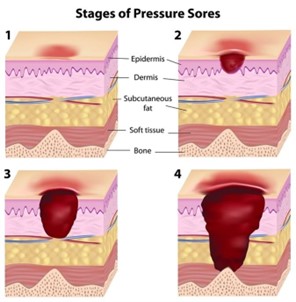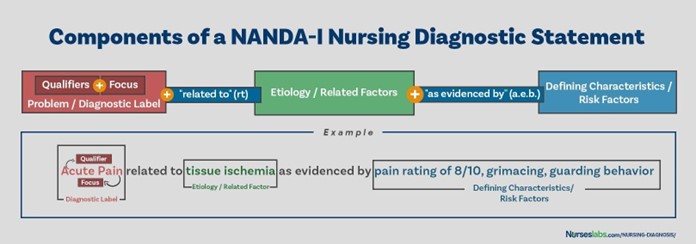While performing a bed bath, the nurse notes an area of tissue injury on the client's sacral area. The wound presents as a shallow open ulcer with a red-pink wound bed and partial thickness loss of dermis. What is the correct name of this wound?
Stage II pressure ulcer
Stage IV pressure ulcer
Stage I pressure ulcer
Stage III pressure ulcer
The Correct Answer is A
A stage II pressure ulcer is a wound that presents as a shallow open ulcer with a red-pink wound bed and partial thickness loss of dermis. This type of wound is caused by unrelieved pressure on the skin, resulting in damage to the underlying tissue. In this scenario, the nurse notes an area of tissue injury on the client's sacral area that matches the description of a stage II pressure ulcer. Stage I pressure ulcers are characterized by non-blanchable erythema of intact skin, while stage III and IV pressure ulcers involve full-thickness tissue loss and may expose underlying muscle, bone, or other structures.

Nursing Test Bank
Naxlex Comprehensive Predictor Exams
Related Questions
Correct Answer is B
Explanation
When selecting interventions for a care plan, the nurse should consider several principles. One important principle is that actions should address the underlying cause (etiology) of the nursing diagnosis. By addressing the root cause of the problem, interventions can be more effective in achieving the desired outcomes. There is not necessarily one "best" intervention for each goal or outcome, as different clients may have different needs and respond differently to interventions. Interventions can include both "doing" actions and monitoring, and both independent and collaborative interventions may be appropriate depending on the situation.

Correct Answer is B
Explanation
Anxiety is a nursing diagnosis that would be appropriate for a client experiencing hypoxia. Hypoxia can cause shortness of breath and difficulty breathing, which can lead to feelings of anxiety. The other options (Hypothermia, Nausea, and Pain) are not directly related to hypoxia.
Whether you are a student looking to ace your exams or a practicing nurse seeking to enhance your expertise , our nursing education contents will empower you with the confidence and competence to make a difference in the lives of patients and become a respected leader in the healthcare field.
Visit Naxlex, invest in your future and unlock endless possibilities with our unparalleled nursing education contents today
Report Wrong Answer on the Current Question
Do you disagree with the answer? If yes, what is your expected answer? Explain.
Kindly be descriptive with the issue you are facing.
